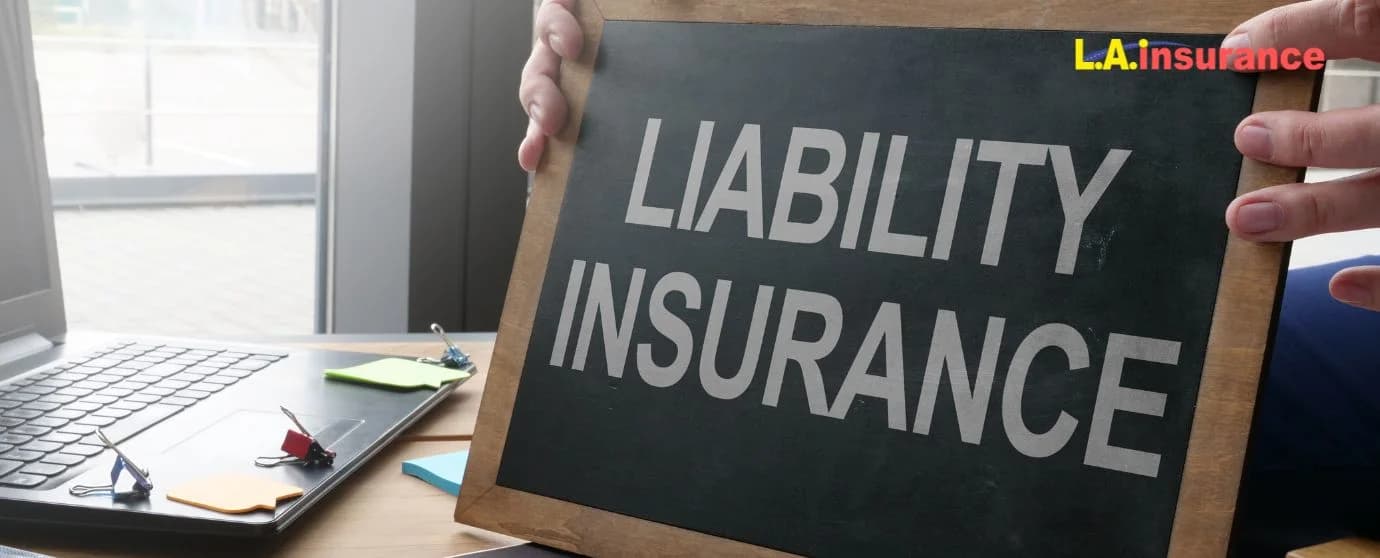
Publish Date: 06-10-2025
Renter's insurance
How Much Renters Insurance Do You Need?
Let’s cut to it: Is renters insurance mandatory? The short answer is no. It’s not required by law. But there is a catch. Just because it is not a legal necessity doesn't mean you can always skip it.
Sometimes your landlord steps in and says, “Yep, you need it.” Many leases now demand proof of minimum renters insurance required by the landlord. This is true especially for newer apartments or professionally managed units. You might see a line in your lease saying you must carry $100,000 in renters liability insurance.
But that’s the bare minimum for them. Not you. Here’s the truth: landlord insurance only protects the building itself. It doesn’t pay for your stolen laptop. It won’t replace your ruined couch after a flood or fire. It won’t cover injury claims if your dog nips a neighbor.
That’s why renters insurance for tenants becomes less of a “nice-to-have” and more of a “don’t risk it.” And you know what, it’s not as expensive as people think.
A 2020 study found that 55% of renters lacking insurance coverage did not know the true expense involved, and 63% underestimated the potential high costs to replace their personal belongings.
According to our research and market analysis, renters' insurance costs between $12 and $30 per month. Sometimes you can get it even cheaper. By spending this amount, you’ll get full-blown financial protection, including personal liability coverage, property damage, loss of use, and even medical payment coverage.
And if you still think you can skip it, ask yourself this:
If your apartment burned down tonight, could you replace everything on your own out of pocket? Would you be able to pay someone’s hospital bills if they slipped in your hallway? If not, you should definitely get renters insurance even if it’s not required by your state or landlord. And this brings us to our next question, which is how much should you buy?
Learn More: What Is Renters Insurance and What Does It Cover?
What Is the Ideal Amount of Renters Insurance?
So, what’s the ideal amount of coverage when it comes to renters insurance? Let’s get to the point. There’s no universal number here that fits everyone. But we can share a smart range based on real-world averages and expert recommendations.
For most renters, a solid renters insurance policy includes:
- $30,000-$50,000 in personal property coverage
- $100,000-$300,000 (If you entertain guests more often) in liability coverage
- Loss of use coverage equal to 30-40% of your property coverage
- A deductible between $500 and $1,000
So, this is a great starting point. However, it still depends on your lifestyle. If you own high-tech, you should bump up the personal property coverage. If you frequently throw weekend parties or if you have pets, it would be more appropriate to get higher liability insurance.
And in case you’re living in an area prone to weather risks such as flood, windstorm, or earthquakes, you should not ignore getting loss of use coverage (AKA Additional Living Expenses). We’ll discuss these factors later in this article, which you should consider when deciding the amount of renters' insurance coverage for you.
However, in essence, the ideal amount of renters' insurance is enough to let you sleep peacefully at night. And you don’t have to take any financial stress if anything bad happens within your rental property.
Looking for affordable renters insurance? Get your renters insurance quote right away from L.A. Insurance. We’re the most affordable insurance agency and offer the lowest monthly premiums.
How to Calculate How Much Renters Insurance You Need
Calculating renters insurance is easy. You don’t need a spreadsheet or a PhD to do so. You just need a little attention and honesty about what your life’s worth in dollars.
Here's how to get it right in 4 simple steps:
1. Create a Home Inventory
Start with what’s in plain sight. Then dig deeper. Go room by room. List furniture, electronics, appliances, clothing, jewelry, and decor. Don’t forget things in your drawers, closets, and storage. You can use your phone to snap photos or shoot a quick video. And pair it with a notes app or spreadsheet. This builds your home inventory for renters' insurance.
2. Estimate the Replacement Value
When you estimate the value, you should consider not what you paid but what it would cost to replace it today. Although you have the option to choose between replacement cash value and actual cash value. But generally, you should only estimate the present-day value of each used item.
You can use websites like Amazon, IKEA, or electronics retailers to price similar items. This gives you an approximation of how much personal property coverage you actually need.
Do your numbers land under $25,000? You’re likely fine with a basic policy. If it’s closer to $50,000 or more, go higher. Add protection for replacement cost vs. actual cash value if needed.
3. Factors in Living Expenses If You’re Displaced
Say a fire, theft, or natural disaster makes your place unlivable. Could you afford a hotel, daily meals, laundry, and maybe pet boarding? If not, that’s where loss of use coverage could be useful. Many insurers automatically set this at 20% to 40% of your personal property limit. But if you’re in a high-cost city, you might need more. Consider this based on the current temporary hotel stays in the city you’re living in.
4. Add Liability Protection That Matches Your Life
Personal liability coverage helps you pay for injuries, medical bills, and legal fees if someone gets hurt in your place or if their property is damaged. Most policies start at $100,000, but you can go up to $300K-$500K easily. If you own a dog, have guests often, or live above someone, go higher.
Pro Tip: Don’t forget the deductible. This is the amount you pay before insurance kicks in. A higher deductible means a lower monthly renters insurance premium. So, pick a number you can actually afford in an emergency.
Learn More: How Long Does It Take to Get Renters Insurance?
Key Factors to Consider When Deciding How Much Renters Insurance Coverage You Need
Every renter is different. They don’t live in the same way. That’s why every policy should look different as well. To get coverage that actually makes sense, you’ve got to weigh your real-life risks. Let’s explain what really matters when setting your limits.
1. Do You Have a Dog?
Big dog? Older dog? Breed with reputation? If you have dog breeds like Pit bulls, Rottweilers, or German Shepherds, that’s a red flag for your personal liability insurance. Because they’re more likely to bite compared to other breeds, especially if not trained adequately.
If your dog bites a guest or knocks over grandma, you could face a lawsuit or a medical payments coverage claim. Some insurers may charge more for “risky” breeds, and some may not even agree to cover them at all.
Pro Tip: If your dog is over 50 lbs. or has a bite history, consider $300,000+ in liability coverage to be on the safest side possible.
2. Do You Host Guests Often?
If you love having friends over or throwing weekend dinners, that’s more foot traffic. It indicates more risks of spills, injuries, and accidents. One guest could cost you thousands in legal fees or medical bills. So if your place is a social hub, you should aim higher on liability coverage amount. You’ll thank yourself later.
3. Where You Live Also Affects How Much Renters Insurance You Need
Your zip code isn’t just for mail. It affects your premium too. If you live in a high-crime area, expect higher property insurance rates. Besides, is your region prone to floods, wildfires, or natural disasters? Your standard renters insurance usually excludes those. If you live in a flood or earthquake-prone area, consider getting separate flood insurance or earthquake coverage. Also, look for exclusions related to water damage, as these are often overlooked.
4. You Own Expensive or Rare Stuff
If your place is stacked with tech, designer gear, or collectibles, your default policy limit may not cut it. Jewelry, art, electronics, and even furniture often come with sub-limits. That means your insurer won’t cover the full value unless you pay to increase it.
In this case, look into a scheduled personal property endorsement or boost your property coverage altogether. If replacement value matters more than just the actual cash value.
5. You Work from Home
If your income relies on equipment like a camera, laptop, or desk setup, you need more renters insurance coverage. Some rental insurance policies do not fully cover home business equipment, or they might not cover business-related claims at all. You may need to add extra coverage or a separate business endorsement.
6. Kids in the Picture? More Chaos, More Coverage
Kids are wonderful. But they break things. Spill things. Invite friends who also break things. This increases your liability risks both inside and outside your home. If you’re a parent, you should aim higher with your liability coverage and make sure your deductible is realistic if something goes sideways.
7. What Does Your Lease or Landlord Require?
Before you set your numbers, check your lease agreement. Some landlords require specific renters insurance coverage limits, usually $100K in liability, sometimes more. Others want proof of renters insurance, an apartment with personal property and loss of use coverage.
8. How Your Building Is Built (Yes, It Matters)
Do you live in an old building? If so, it may have poor wiring and no sprinklers, which increases the risk of fire. Also, if you live on a higher floor, you might face more water damage if a pipe bursts.
On the flip side, new buildings with smoke detectors, alarms, and sprinkler systems may help lower your renters insurance premium. Still, your coverage limit should reflect your replacement value, not just your building’s safety score.
9. What’s Your Net Worth and What You Can Afford to Lose?
If someone sues you, they will go after what you own. So, make sure your liability insurance matches what you have. This means looking at your savings, investments, and even your credit. If you have a lot of assets to protect, don’t settle for just $100K in coverage. If you’re on a tight budget, find a balance between your deductible and coverage limits. This way, you can keep costs manageable without putting yourself at risk.
How to Balance Coverage and Affordability?
The goal is not just to have insurance. It’s to have it wisely, without spending too much. Here’s how to keep your renters insurance costs low while still getting good protection:
- Start with what you need. Use a home inventory to set a realistic coverage limit. If your belongings are worth $25,000, don’t pay for $60,000.
- Adjust your deductible wisely. A higher deductible means a lower premium. So, choose an amount you can afford in an emergency, like $500 or $1,000.
- Bundle your policies. If you have auto insurance, get renters insurance from the same company. You might get a discount for combining them.
- Look for discounts. Things like smoke alarms, deadbolt locks, good credit, or choosing paperless billing can lower your costs. Paying yearly instead of monthly can also save money.
- Don’t undervalue liability coverage. It’s tempting to cut liability coverage to save a little. But one injury, accident, or lawsuit could end up costing way more than what you save.
Optional Add-Ons: When and Why You Might Need More Coverage [H2] Your basic renters insurance covers a lot, but not everything. Depending on your life and belongings, you may need extra protection. Let’s look at common add-ons, or endorsements, and see when they are worth it.
1. Scheduled Personal Property Coverage
If you own jewelry, collectibles, fine art, or electronics that exceed your policy limits, consider this add-on. Standard policies often limit payouts for these items. For example, if you have a ring worth $5,000, your basic policy may only cover $1,500. That’s a significant difference. This add-on allows you to get the full replacement value for your high-value items.
2. Flood Insurance
Flood damage isn’t covered by most renters' policies. If you live near water or in a flood-prone area, this one’s a no-brainer. You can buy it through the National Flood Insurance Program (NFIP) or certain insurance companies. Don’t assume your renters' policy includes it because it usually doesn’t.
3. Water Backup Coverage
It’s different from flood coverage. This protects you if water backs up from a sewer or sump pump and damages your stuff. It’s an often-overlooked risk and one of the messiest.
4. Umbrella Policy
If your assets total more than $500,000, you should consider getting umbrella insurance. This type of insurance provides extra coverage once your regular liability insurance reaches its limit. It’s especially useful for renters with savings, investments, or higher financial risk.
5. Identity Theft Protection
This service covers legal fees, credit monitoring, and document recovery if someone steals your ID. If your wallet, laptop, or personal information is at risk, this might be worth the extra $5 to $10 a month.
What Does Your Landlord Actually Require?
Renters insurance isn’t legally required, but your landlord might still make it mandatory. In many leases today, landlords include a clause that requires tenants to carry a minimum amount of renters insurance. This usually means having at least $100,000 in liability coverage, sometimes more. You may also need to show proof of coverage before moving in and list your landlord as an “interested party” so they’re notified if your policy is canceled.
Landlords do this to protect their property and limit their own liability. Their insurance policy covers the building, not your belongings or legal expenses if someone gets hurt in your unit. Requirements can vary by state. So, always read your lease carefully. If anything feels unclear, ask before signing. Keep in mind that what your landlord requires is the bare minimum. And it’s not always enough to protect you. You might still need more coverage based on your lifestyle and risks.
Summary: Renters Insurance Coverage Checklist
- Confirm if renters insurance is required by your landlord
- Calculate the total value of your personal property
- Choose replacement cost over actual cash value
- Set liability coverage to at least $100,000 Add loss of use coverage for temporary housing
- Pick a deductible you can comfortably afford Consider add-ons for jewelry, electronics, or collectibles
- Get flood or water backup coverage if needed
- Bundle renters and auto insurance for discounts
- Look for safety, autopay, and paperless discounts
- Avoid underinsuring to save a few dollars
- Provide proof of coverage if your lease requires
- Review and update your coverage every year
Related Article:
How Much Is Renters Insurance?
How to Cancel Renters Insurance ?
FAQs About Renters Insurance Coverage Requirements
How much liability coverage should you get?
Start with at least $100,000 in liability coverage. Increase it to $300,000 or more if you host guests often. Pet owners should consider higher limits due to injury risk. Liability covers legal fees, injuries, and property damage claims.
What is loss of use coverage, and how much is enough?
It pays for extra living costs if your home becomes unlivable. This includes hotel stays, food, laundry, and temporary rent. Most policies set this at 30% to 40% of proper ty coverage. You should Increase the amount if you live in a high-cost area.
Do you need medical payments to others coverage?
Yes, it covers small injuries to guests, even if you're not at fault. It pays quickly without needing a lawsuit. Recommended coverage is between $1,000 and $5,000. It offers peace of mind for minor accidents.
How much renters insurance is enough?
It depends on the value of your belongings and risk level. As we said, most renters need $30,000 to $50,000 in personal property coverage. Start with $100,000 in liability coverage at minimum. Add more based on lifestyle, location, and personal assets.
What is covered by renters insurance?
Renters insurance covers your personal property against theft, fire, smoke, and some water damage. Also includes liability, loss of use, and medical payments. It protects you at home and sometimes while traveling. Optional add-ons cover high-value items, jewelry, electronics, and identity theft.
What is not covered by renters insurance?
It doesn’t cover floods, earthquakes, or damage from pests. Intentional damage and wear and tear are also excluded. Business equipment may need separate coverage. Read the policy to understand specific exclusions.
How to choose renters' insurance coverage?
Start by creating a full home inventory with values. Choose replacement cost coverage for better protection. Set liability based on your assets and risks. Adjust loss of use and add-ons based on your lifestyle.
What is the minimum coverage for renters insurance?
Landlords often require $100,000 in liability coverage. Minimum personal property coverage usually starts around $15,000. However, requirements vary by lease and state laws. Always read your lease or talk to your landlord to confirm what's required.
Tag :
Renter's insurance
cheap insurance








